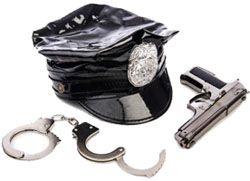| |
The Brode Report | January/February 2013
 |
|
Hi,
We’re now about a month into 2013 and I find myself very focused on FirstNet. Intellectually it’s a great challenge to figure out how to start up an enterprise that, on the plus side has $7B, but on the other hand has to live up to the ambition to provide wireless broadband service to first responders across the U.S. that can survive any disaster. I’ve been traveling to the San Francisco Bay Area again quite frequently and enjoy the city of my youth. Well, not so much the city of my youth as we’re in the East Bay and I’ve mainly just driven through SF on the way to Oakland or gotten only as close as the airport since our offices are in San Ramon. Still, it feels comfortable and familiar. It’s great to be working with people I last worked with nearly twenty years ago. The project definitely has that “getting the band back together” feel to it, and I’m enjoying the enormity of our task and the skills being deployed to solve the problems.
Best regards,
David |
| |
|
|
|
| |
Police Fun Facts!
As we dove into the project and talked with current LMR (land mobile radio) operators, we heard stories about small towns where there wasn’t a desire for fancy new radios or wireless broadband services  among the police department. Mindful that the plural of anecdote is NOT data, I was excited to find statistics on the size of police departments nationwide. One thing I’ve re-learned about government is about the quantity of statistics available. Police departments are, after all, public institutions and the Department of Justice keeps good national statistics on them. among the police department. Mindful that the plural of anecdote is NOT data, I was excited to find statistics on the size of police departments nationwide. One thing I’ve re-learned about government is about the quantity of statistics available. Police departments are, after all, public institutions and the Department of Justice keeps good national statistics on them.
One particularly useful report is the Local Police Departments, 2007 publication which is part of a larger set of data published by the Bureau of Justice Statistics about local law enforcement. If you’re so inclined you can sift through the raw data yourself, but I suspect you’re strapped for time and so I figured it would be enlightening to share some facts I derived after crunching the numbers. Without further ado, here are Five Police Fun Facts:
1.
|

How many police does your city have? If you’re following nationwide averages, it’s 2.3 per 1,000 residents. So Boulder with 97,345 people should have 234 officers. But your mileage may vary: New Orleans has 7.4 per 1,000 whereas San Diego has 2.1 per 1,000.
|
2. |
 Nationwide there are nearly 700,000 sworn officers; about two thirds of these are in local police departments with the bulk of the balance in sheriff’s offices. Nationwide there are nearly 700,000 sworn officers; about two thirds of these are in local police departments with the bulk of the balance in sheriff’s offices.
|
3. |
Half of the departments have fewer than 10 officers. Given 24/7 duty schedules means you need 4.5 people per seat, and that means only 2-3 officers on duty at any given time. That’s HALF the police departments. However, they only account for 5% of the officers in the U.S. |
4. |
On the flip side, most of the officers are in a few departments. The top 200 departments (well under 2% of the total) have nearly half of the officers. These are departments with 250+ officers. |
5. |

Finally, there are about 410,000 police cars out there. Still, that’s one-sixth of one percent (0.16%) of the 254M private vehicles on the road. |

|
|
|
|




 Nationwide there are nearly 700,000 sworn officers; about two thirds of these are in local police departments with the bulk of the balance in sheriff’s offices.
Nationwide there are nearly 700,000 sworn officers; about two thirds of these are in local police departments with the bulk of the balance in sheriff’s offices. 